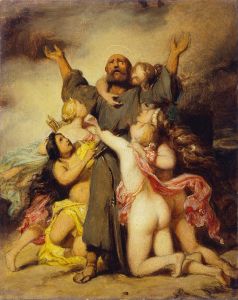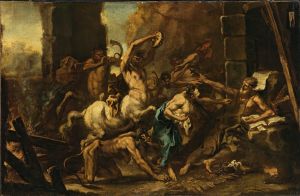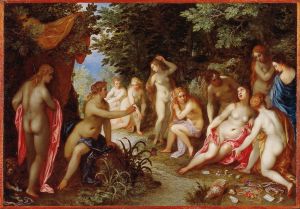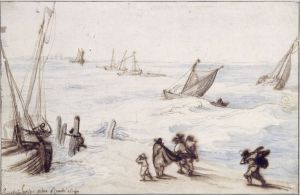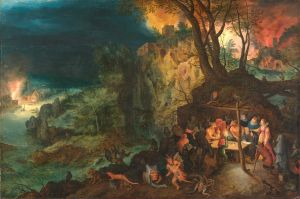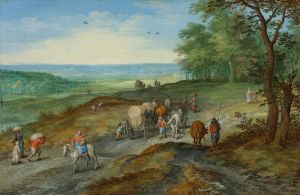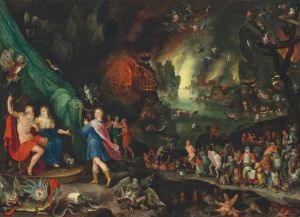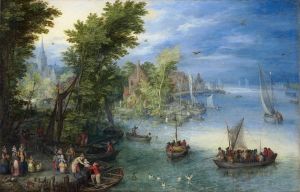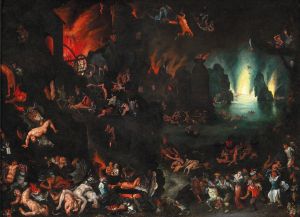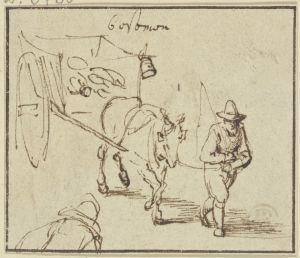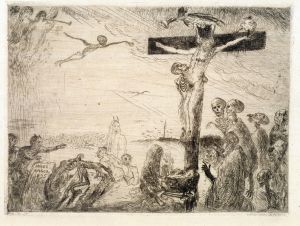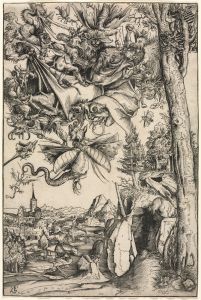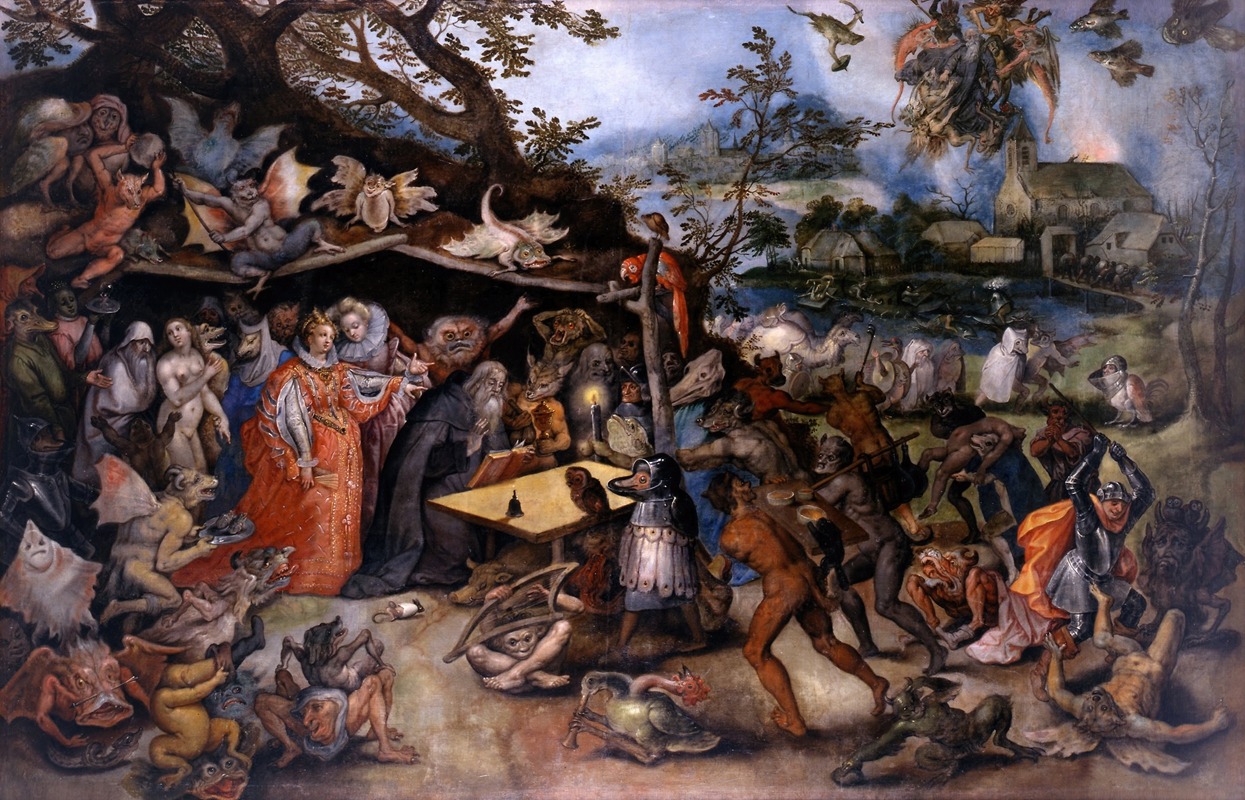
The Temptation of Saint Anthony
A hand-painted replica of Jan Brueghel The Elder’s masterpiece The Temptation of Saint Anthony, meticulously crafted by professional artists to capture the true essence of the original. Each piece is created with museum-quality canvas and rare mineral pigments, carefully painted by experienced artists with delicate brushstrokes and rich, layered colors to perfectly recreate the texture of the original artwork. Unlike machine-printed reproductions, this hand-painted version brings the painting to life, infused with the artist’s emotions and skill in every stroke. Whether for personal collection or home decoration, it instantly elevates the artistic atmosphere of any space.
Jan Brueghel the Elder, a prominent Flemish painter from the late 16th to early 17th century, is renowned for his detailed landscapes and vivid depictions of biblical and mythological scenes. One of his notable works is "The Temptation of Saint Anthony," a theme that has been explored by various artists throughout history. This painting reflects Brueghel's intricate style and his ability to blend fantastical elements with religious narratives.
"The Temptation of Saint Anthony" by Jan Brueghel the Elder is part of a long-standing tradition in Western art that depicts the trials and tribulations faced by Saint Anthony the Great, a Christian monk from Egypt who is considered the father of monasticism. The story of Saint Anthony's temptations is derived from the writings of Athanasius of Alexandria, which describe how Anthony retreated to the desert to lead a life of asceticism and was subjected to numerous temptations by demonic forces.
Brueghel's interpretation of this theme is characterized by his meticulous attention to detail and his ability to create a vivid, almost surreal atmosphere. The painting typically features a chaotic scene filled with bizarre creatures and fantastical landscapes, illustrating the spiritual and psychological challenges faced by Saint Anthony. These elements are rendered with Brueghel's characteristic precision, showcasing his skill in depicting both the natural world and the supernatural.
In Brueghel's work, Saint Anthony is often portrayed as a solitary figure amidst a tumultuous environment, emphasizing his isolation and the intensity of his spiritual struggle. The demons and creatures that surround him are depicted with a sense of whimsy and grotesque imagination, reflecting the artist's interest in the fantastical and the bizarre. This combination of religious narrative and imaginative detail is a hallmark of Brueghel's style and contributes to the enduring appeal of his work.
Jan Brueghel the Elder was part of a prominent artistic family, being the son of Pieter Bruegel the Elder and the father of Jan Brueghel the Younger. His collaborations with other artists, such as Peter Paul Rubens, further highlight his significance in the art world of his time. Brueghel's ability to blend detailed landscapes with complex narrative scenes made him a sought-after artist, and his works were highly valued by collectors and patrons across Europe.
"The Temptation of Saint Anthony" by Jan Brueghel the Elder is a testament to his artistic prowess and his ability to convey complex themes through intricate compositions. While the exact date of this particular painting is not always specified, it is generally placed within the early 17th century, a period when Brueghel was at the height of his creative powers.
In summary, Jan Brueghel the Elder's "The Temptation of Saint Anthony" is a remarkable example of Flemish painting that combines religious themes with imaginative detail. Through his depiction of Saint Anthony's trials, Brueghel not only illustrates a well-known biblical story but also showcases his unique artistic vision, characterized by meticulous detail and a fascination with the fantastical.





